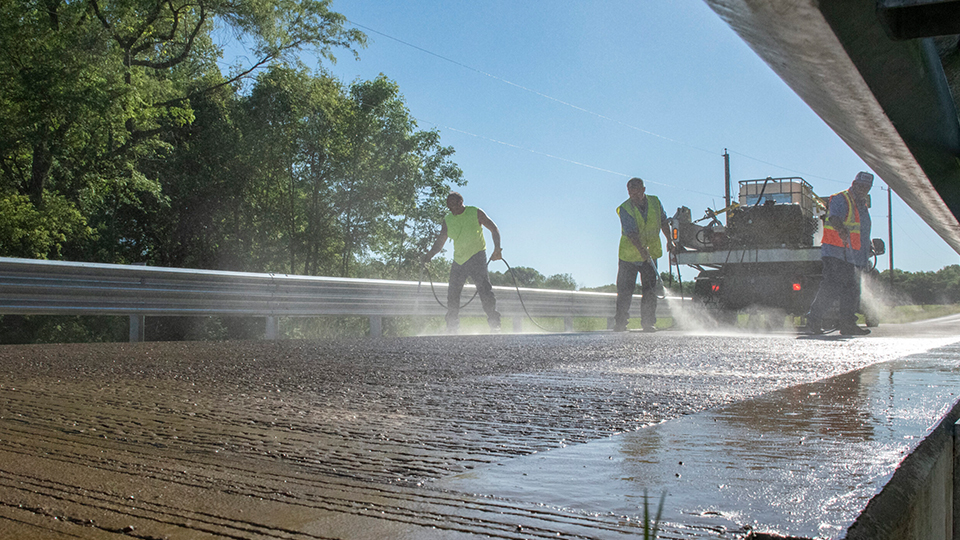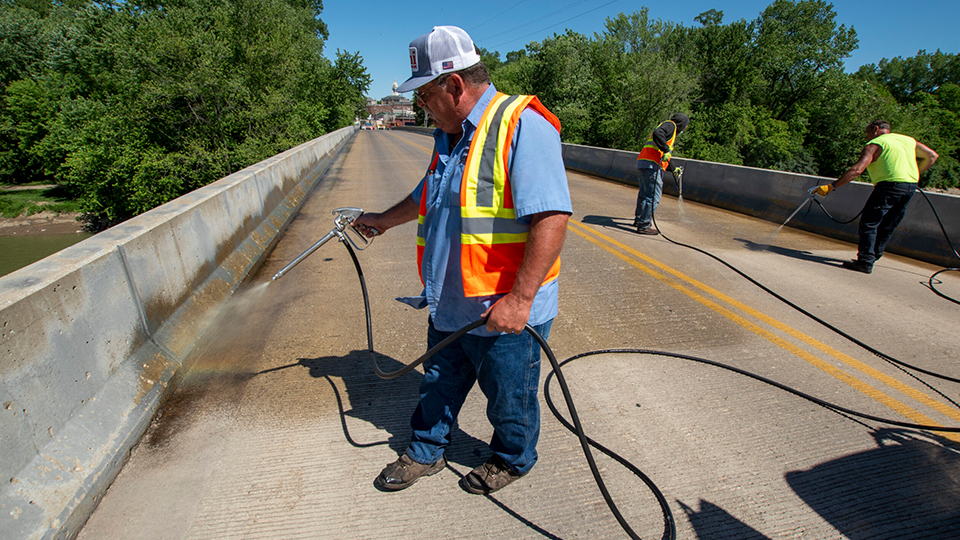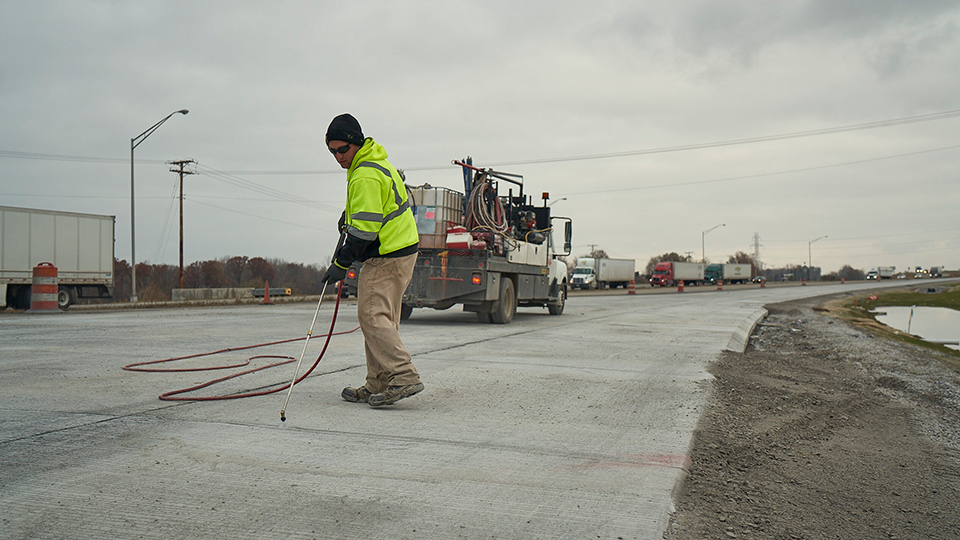Soy-based concrete protectant expanding use
Subscriber Benefit
As a subscriber you can listen to articles at work, in the car, or while you work out. Subscribe NowA soybean-based spray developed at Purdue University is helping to extend the life of concrete roadways and bridges, while also helping state transportation departments throughout the U.S. save millions of dollars in costly repairs and replacements. PoreShield was developed by researchers who were looking for ways to improve concrete stability and reliability, especially on roads that get treated with calcium chloride (road salt) during the winter months. The soybean-based product is jointly owned by Purdue and the Indiana Soybean Alliance.
In an interview with Inside INdiana Business, PoreShield Technical Consultant Paul Imbrock, who helped develop PoreShield while a student at Purdue, said the product works differently than traditional highway sealants.
“You can apply topically to new or old concrete. It absorbs deep into the pores of the concrete where it remains hydrophobic (repels water) and fluid. So, de-icing salts…can’t be absorbed into the concrete,” explained Imbrock.
Imbrock says the barrier protects concrete against water, salt, snow melt and the freeze/thaw cycle Indiana roads inevitably face each winter. Contractors typically spray the entire deck of bridges but usually limits it to road joints on highways, which are most susceptible to wear and tear. He says it also stops any existing damage and deterioration from getting worse.
“PoreShield is not only more effective at reducing chloride ion diffusion, but it also increases the service life to concrete five-to-nine times longer,” claims Imbrock.
For the past three years, the Indiana Department of Transportation has utilized PoreShield on road projects throughout the state. It has also been road-tested in Wisconsin and is now undergoing a major test in Illinois.
The Illinois test is in partnership with the Soy Transportation Coalition, a national organization comprised of state soybean associations and other ag groups, which is particularly interested in protecting rural bridges from deterioration.
“The reliability of the roads around them is critical. If you have to take every load of soybeans five miles out of the way because the local bridge is closed, that is a significant encumbrance on a farmer,” said Imbrock, who added rural counties often have limited budgets for road repairs.
“We had one county engineer in Iowa telling me that he has a bridge that needs [to be] fully replaced. The cost to replace that bridge is five years of his budget,” shared Imbrock.
Imbrock says the road protectant can also help with market demand for soybeans, which is a primary driver for Indiana Soybean Alliance.
“One bushel of beans makes one and a half gallons of PoreShield. So, if we’re using 2,000 gallons, that’s about 1,300 bushels of beans we’re using right to protect the highway or long term,” said Imbrock.
While PoreShield was developed with roadways in mind, it has other applications as well including farm-use to protect structures that are exposed to livestock urine and harsh outdoors environments.
Imbrock says it is working in partnership with the Indiana Pacers and the $360 million renovation of the Gainbridge Fieldhouse in Indianapolis. Imbrock says Poreshield has been being applied to various aspects of concrete in and around the venue.
“Where the trucks come in and pick up the garbage. You have all those bins inside the facility that are being constantly dumped into the trucks, you can imagine stuff spills there. And then you also have everything with salt and things the trucks bring in off the road. So, a pretty aggressive environment and a concrete that you certainly don’t want to deteriorate,” said Imbrock.
He says the enhancer is also being used on part of the Bicentennial Unity Plaza which is being constructed adjacent to Gainbridge.
Imbrock says while much of the usage of PoreShield has been in the Midwest, he says departments of transportation in the Pacific Northwest and East coast are utilizing the product.
Click here to learn more about the technology.




